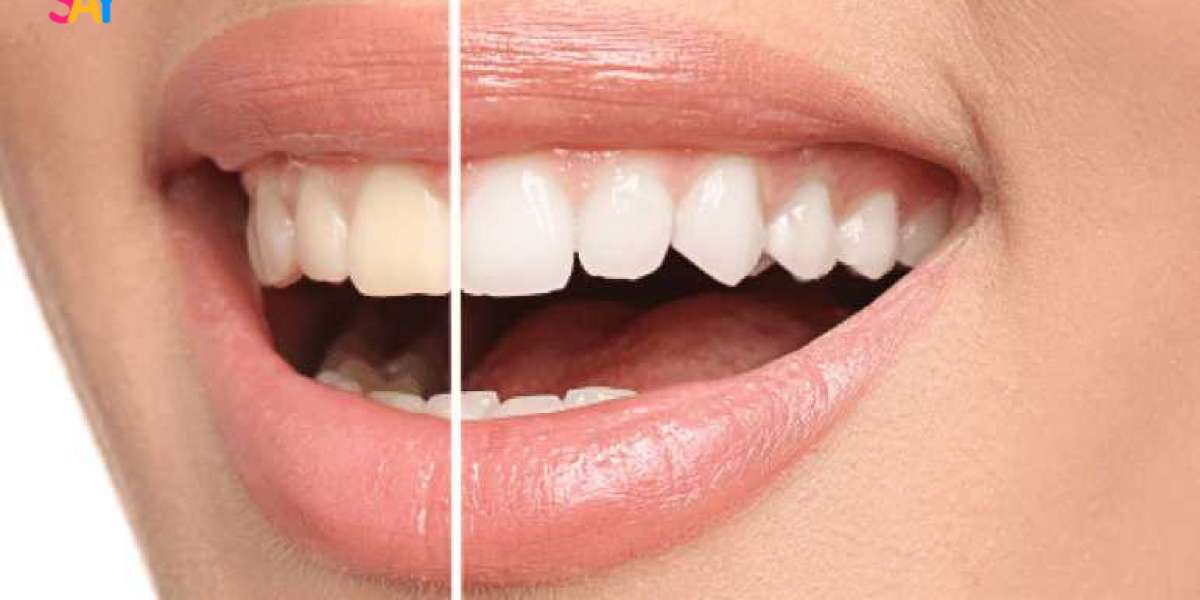If you’ve been exploring teeth whitening options, chances are you’ve come across nano teeth whitening—a newer, enamel-friendly method using nano-hydroxyapatite to gently restore tooth brightness. But with any emerging technology, misinformation follows. To help you make informed decisions, we’re tackling the top myths and setting the record straight. Whether you’re a curious beginner or considering your first treatment, these are the 10 most common myths about Nano Teeth Whitening Treatment, debunked.
It's Just Another Name for Peroxide Whitening:
One of the most common misconceptions about nano teeth whitening is that it’s no different from conventional bleaching. In reality, it’s a completely distinct approach that does more than just whiten.
Why this myth is false:
Nano whitening does not use hydrogen peroxide or harsh bleaches
It works by remineralizing the enamel, not by chemically oxidizing stains
It’s safe for daily use, unlike traditional whitening which can harm enamel
Ideal for people with sensitivity, as it causes little to no irritation
Supports long-term enamel health, not just cosmetic results
Nano teeth whitening is science-backed and offers a dual benefit: surface stain reduction and enamel repair.
It Works Instantly and Doesn’t Need Maintenance:
Another myth is that nano whitening delivers instant results or that one application is enough to keep teeth white forever. The truth is more realistic—nano whitening is gradual and requires consistency.
Here’s why expectations should be adjusted:
Results typically appear over 2–4 weeks, not immediately
Daily use of nano toothpaste or serum is essential for best outcomes
It whitens naturally, so results are subtle rather than dramatic overnight
Long-term use strengthens enamel, unlike peroxide, which can weaken it
Maintenance is key—good habits preserve whitening effects
Think of it as skincare for your teeth: daily care brings sustainable beauty.
It’s Not Effective on Real Stains or Older Teeth:
Some believe nano whitening is too mild to deal with everyday stains or only works on young teeth. This couldn’t be further from the truth—its enamel-restoring properties actually make it great for aging teeth and stubborn stains.
The facts tell a different story:
Works effectively on stains from coffee, tea, and red wine
Can reduce yellowing from aging by reinforcing tooth surface
Ideal for adults who’ve experienced enamel thinning
Great for smokers transitioning away from nicotine staining
Enhances brightness without damaging older teeth
While it may not bleach like peroxide, it noticeably lifts surface discoloration and improves overall tooth texture.
It Can Damage Fillings or Dental Work:
A widespread concern is whether nano whitening can harm crowns, fillings, or veneers. Fortunately, it’s one of the most restoration-friendly whitening options available today.
Here’s the reality:
Nano-hydroxyapatite is non-abrasive and biocompatible
Safe for use around dental restorations, including implants and veneers
Won’t chemically degrade bonding agents or fillings
Helps polish nearby natural teeth for a more uniform look
Often used to maintain cosmetic dental work, not replace it
This makes it a top choice for people with mixed natural and artificial teeth.
It’s Too Expensive or Only Available in Clinics:
Many assume that because it’s innovative, Nano Teeth Whitening must be pricey or only accessible through dental offices. In fact, many affordable at-home options now exist, making this treatment widely available.
Why affordability isn’t a barrier:
Nano whitening toothpastes and kits are sold online and in stores
Professional treatments are optional, not mandatory
You can get started with under $30 for quality at-home products
Longer-lasting results mean less frequent reapplication
No need for custom trays or expensive LED devices
From drugstore aisles to subscription plans, nano whitening is easy to access and maintain.
It’s Just a Trend Without Real Science:
Lastly, some skeptics say nano whitening is just a buzzword without real dental backing. In truth, the technology behind it is rooted in biomimetic science and decades of research in remineralization.
Scientific reasons why it’s credible:
Nano-hydroxyapatite mimics the natural mineral structure of teeth
Originally developed by NASA to protect astronauts' enamel in space
Used in Japan and Europe for over 30 years before becoming mainstream
Studies show significant improvement in tooth smoothness and brightness
Dentists increasingly recommend it for daily use
It’s far more than a trend—it’s a scientifically sound, effective alternative to traditional whitening.




